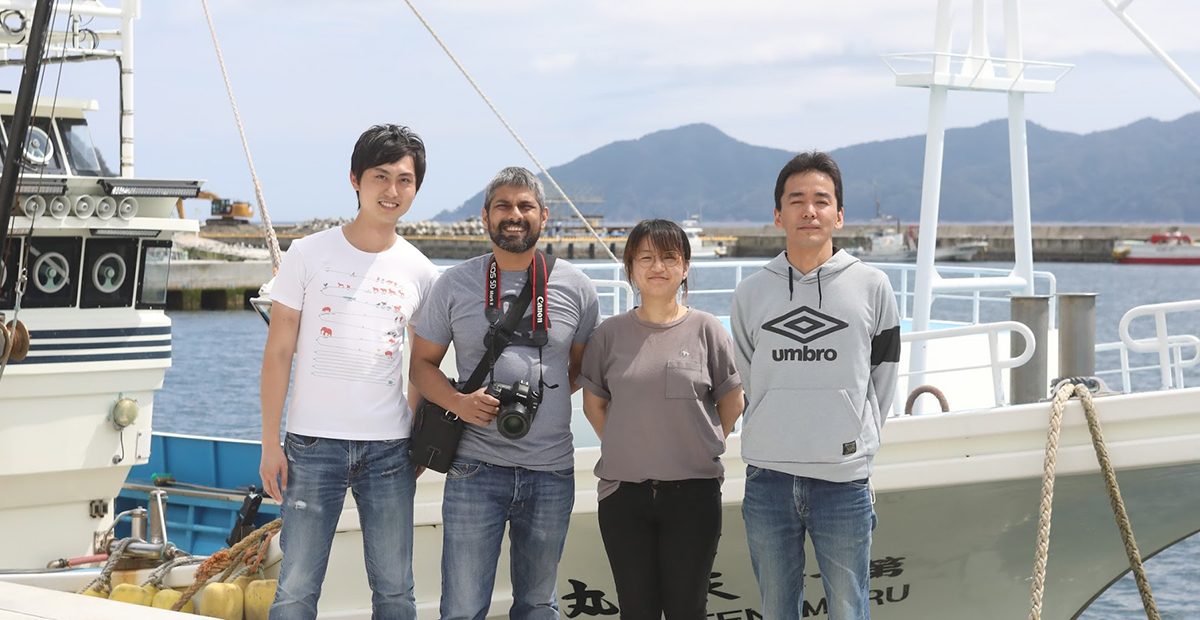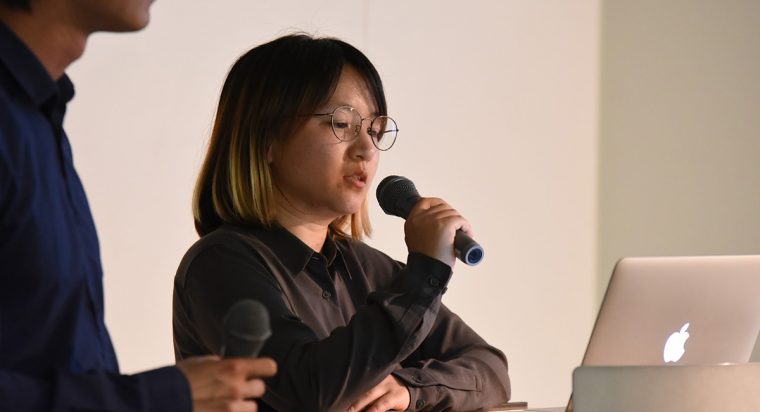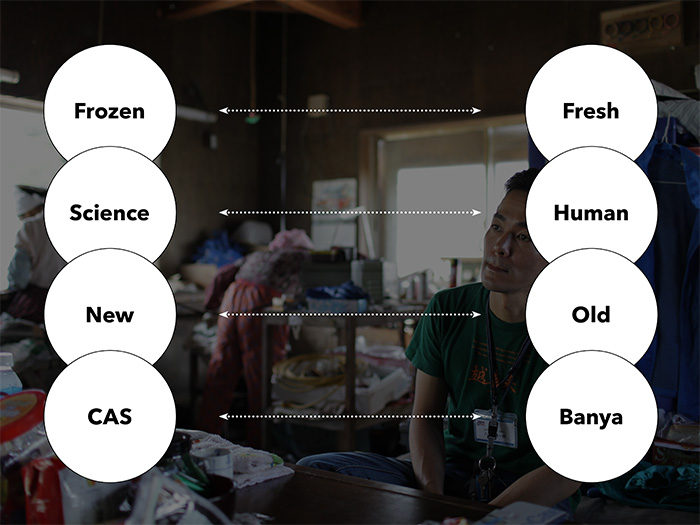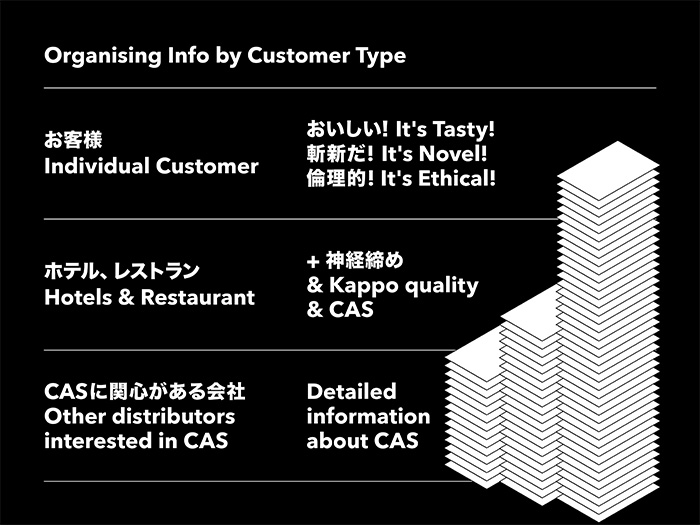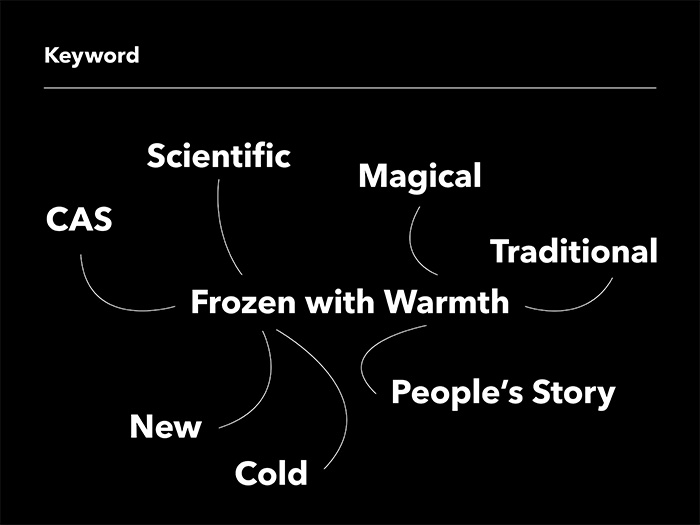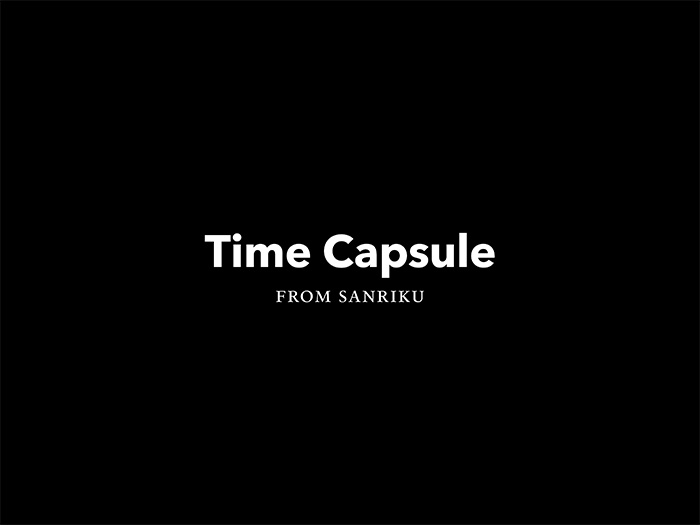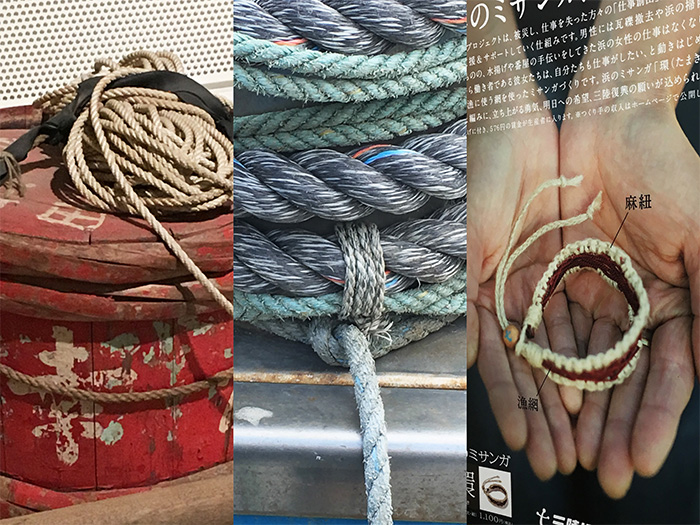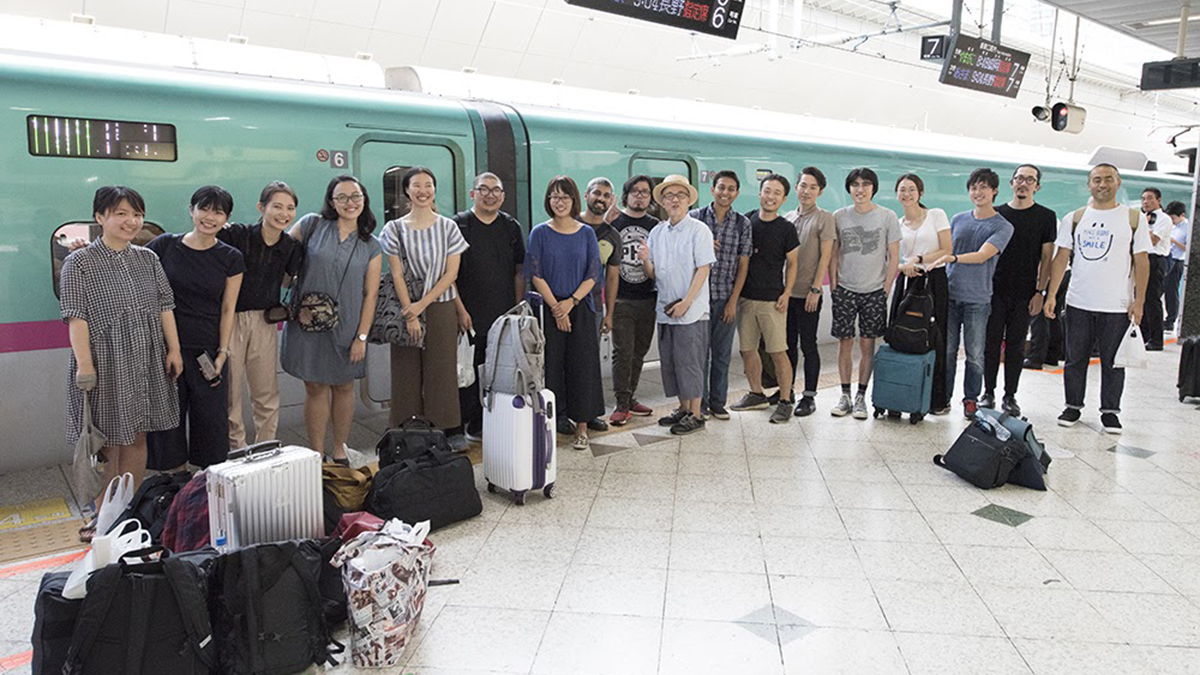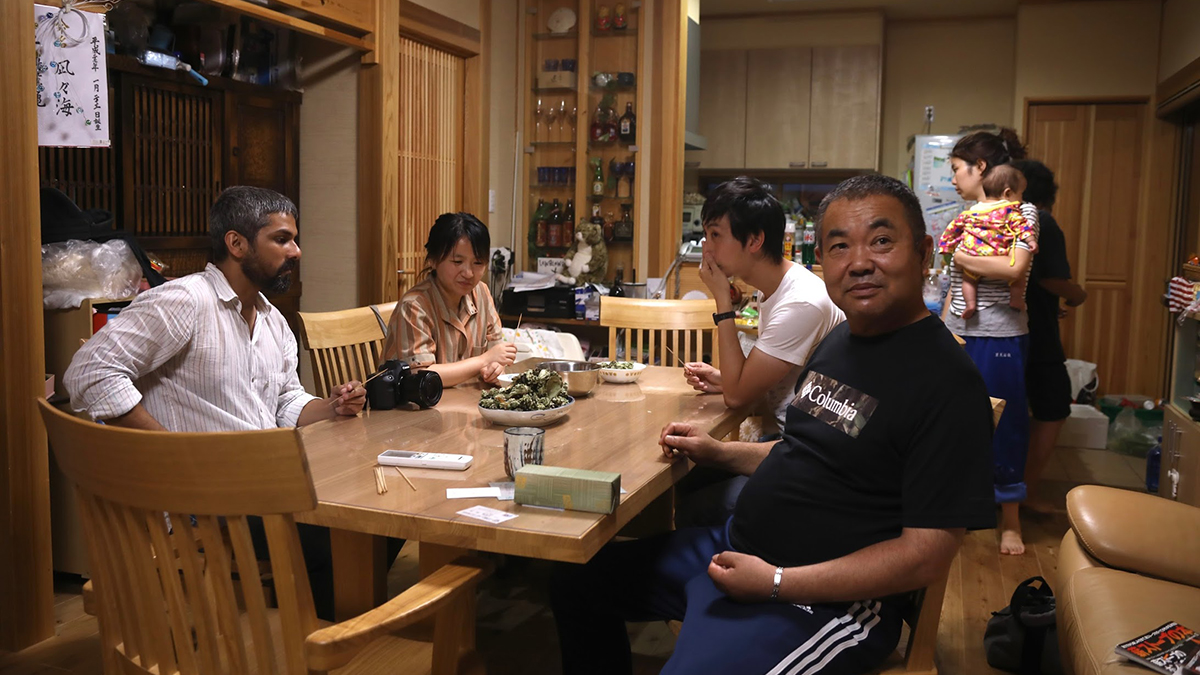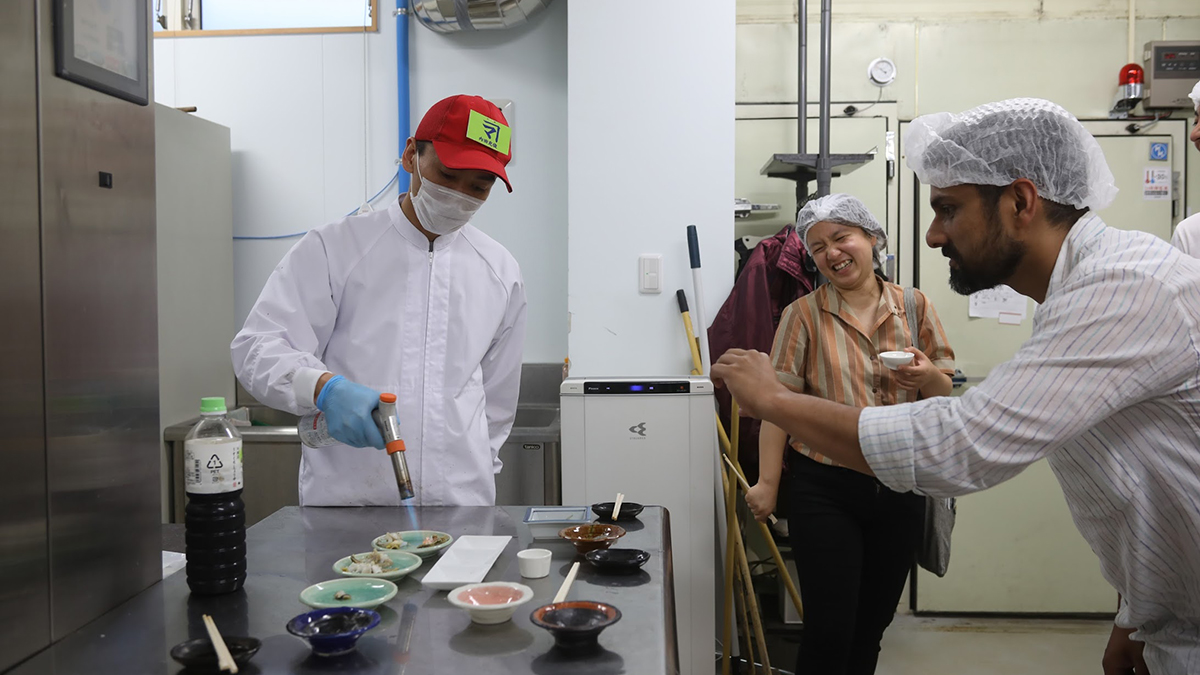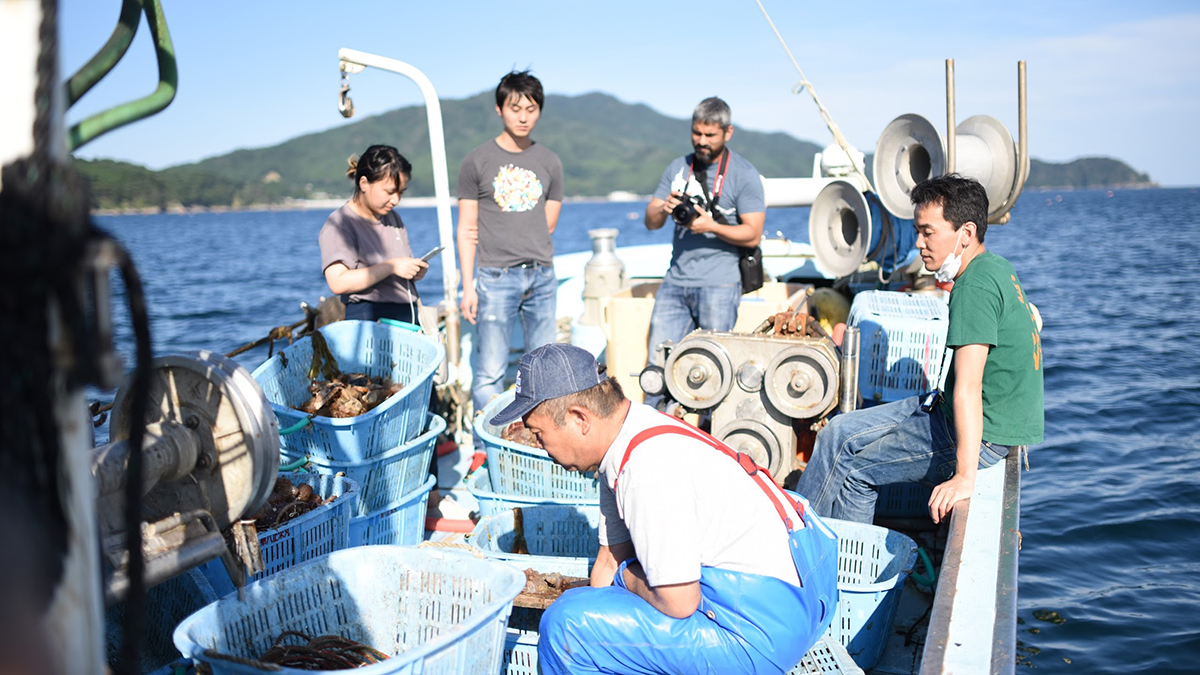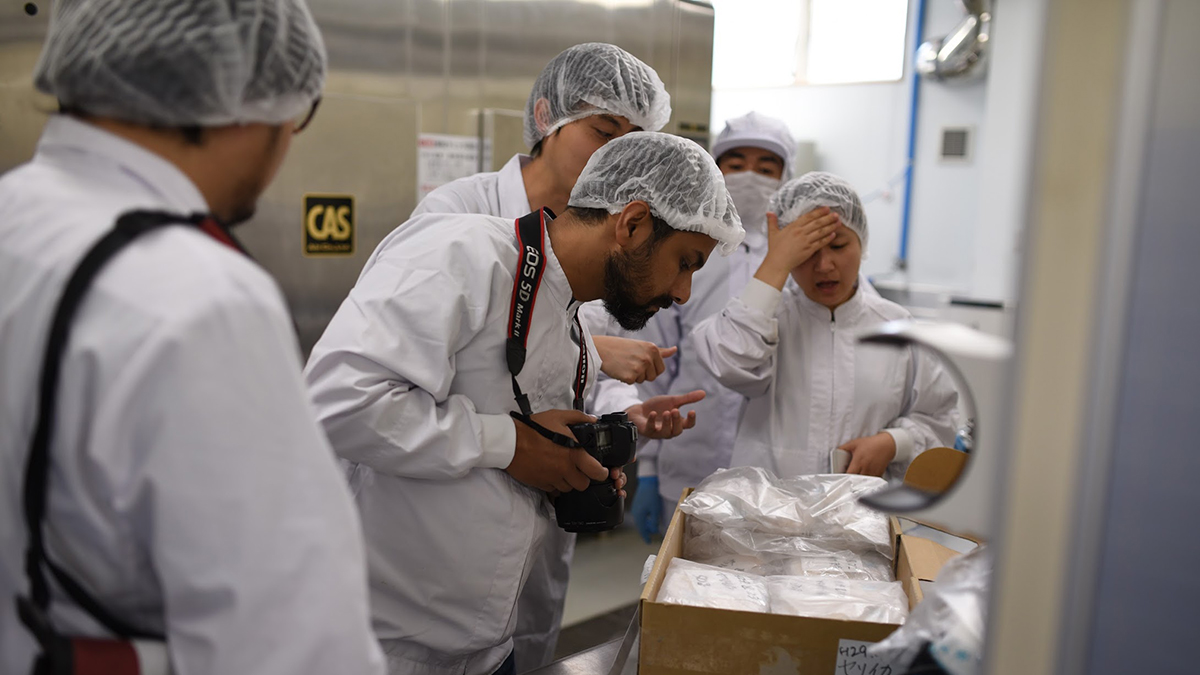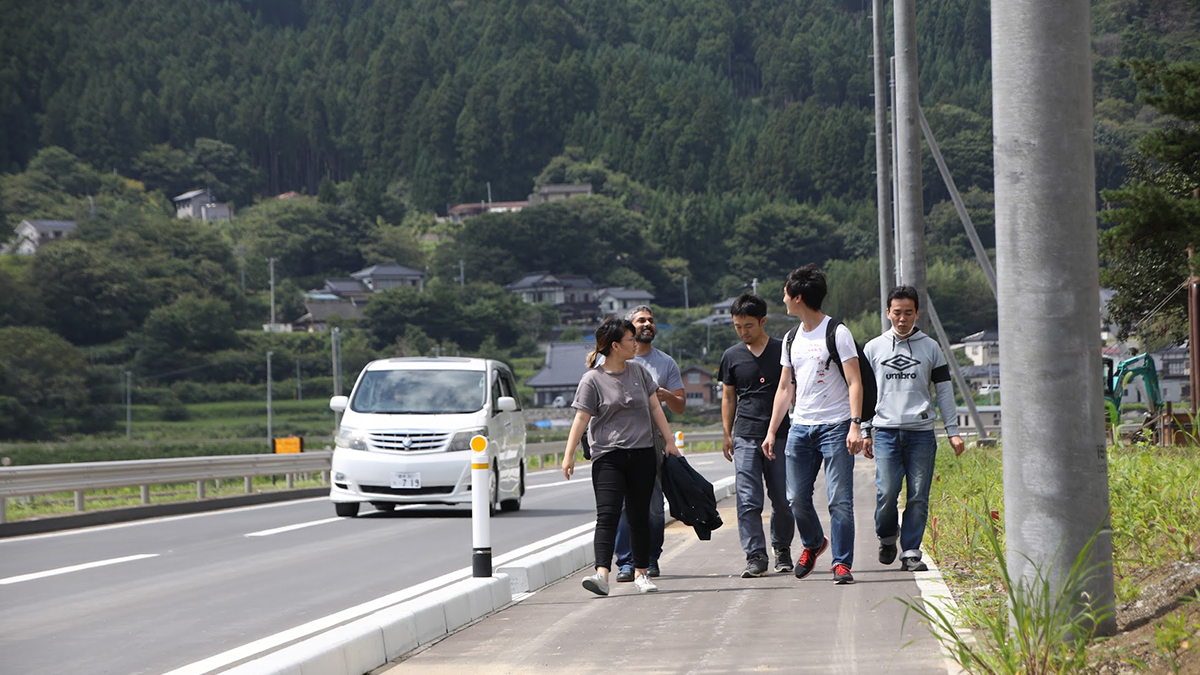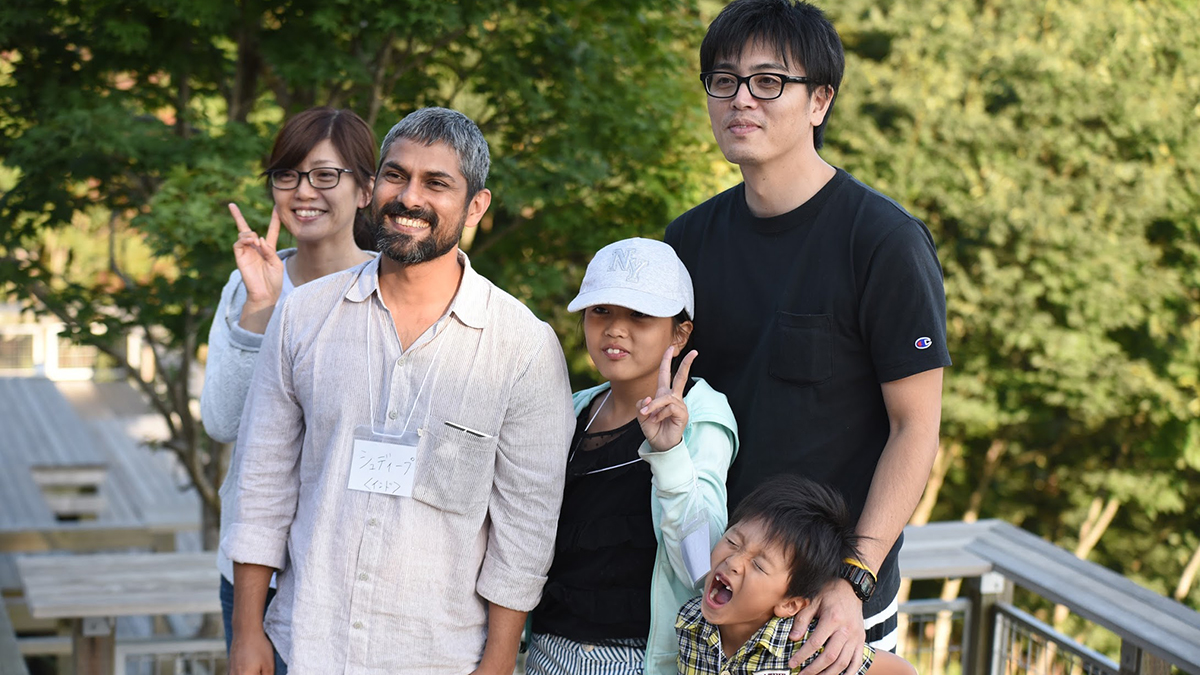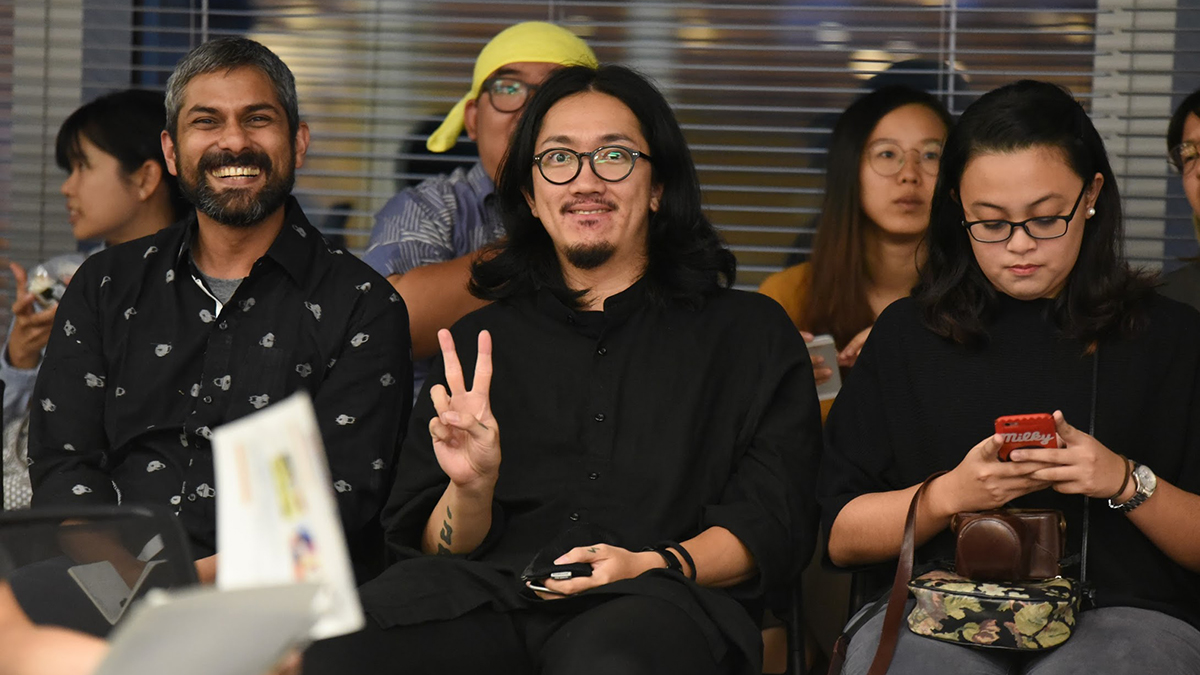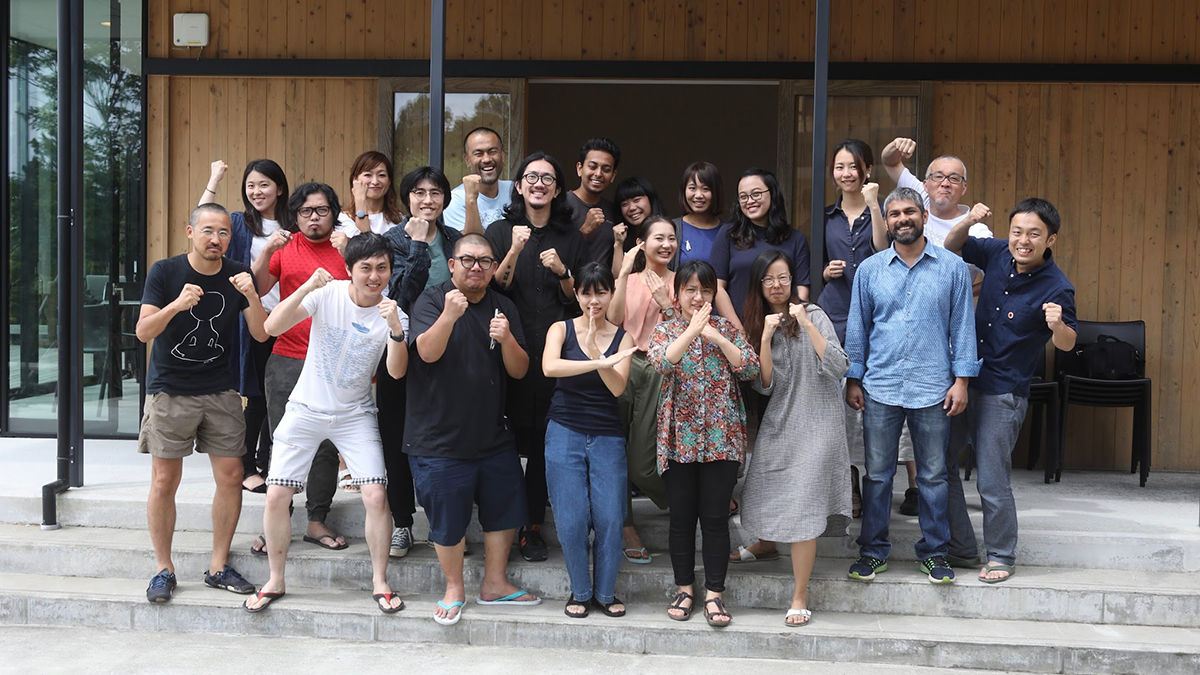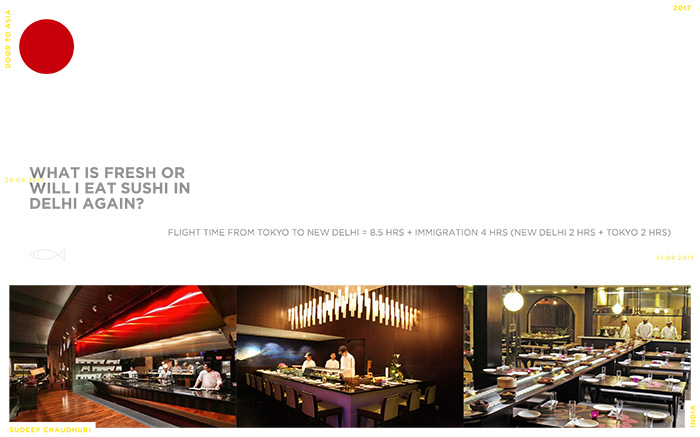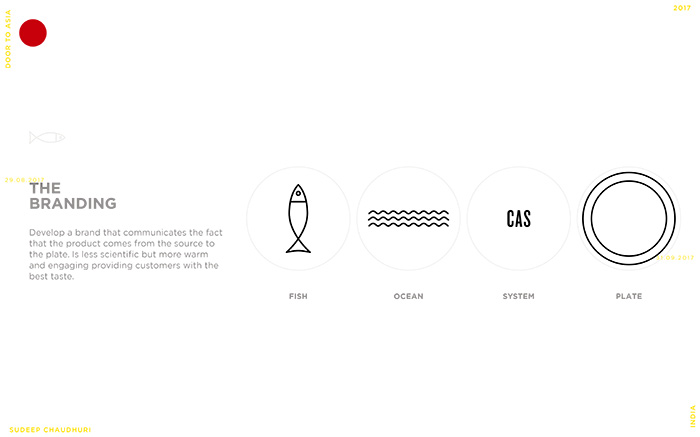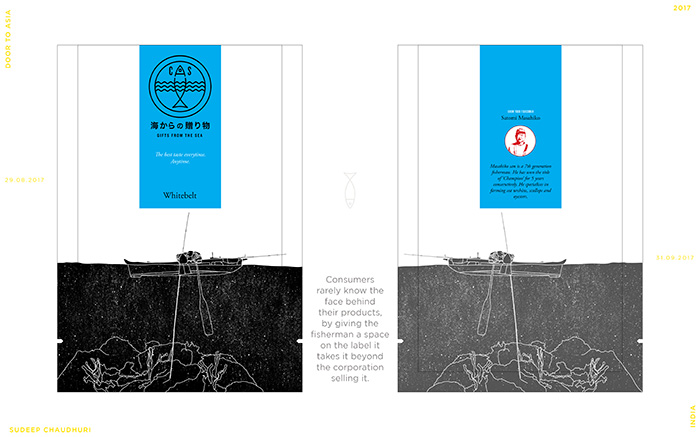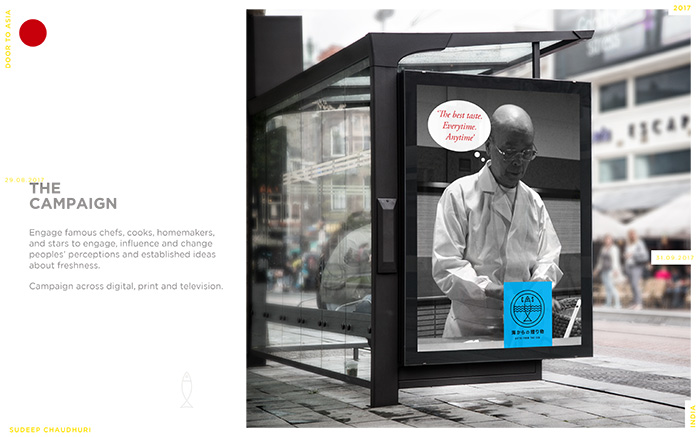To confess with a bit of shame aside, I was very naive when I first took an offer to participate in Door to Asia. I simply took it as a free trip to Japan, I said yes without much understanding of Tohoku nor the program itself. The Door to Asia experience, however, was something that I wouldn’t have expected even though I had had a better understanding of the program. To sum up, it was a rare opportunity to meet ordinary but extraordinary people, which opened up the new world for me. How can someone expect something about the world that they never knew?
少し恥ずかしいですが、正直に言うと、DOOR to ASIAに招待されたとき、タダで日本に行けるチャンスだと捉え、東北のこともDOOR to ASIAのことも深く理解せずに、安易な気持ちで引き受けてしまいました。しかし、DOOR to ASIAでの体験は、自分が想像する以上のものでした。素晴らしい方々とお会いし、交流することができて、視野が広がりました。自分が全く知らなかった世界に置かれて、どんなものが期待できて、どんなものが手に入るのでしょうか?
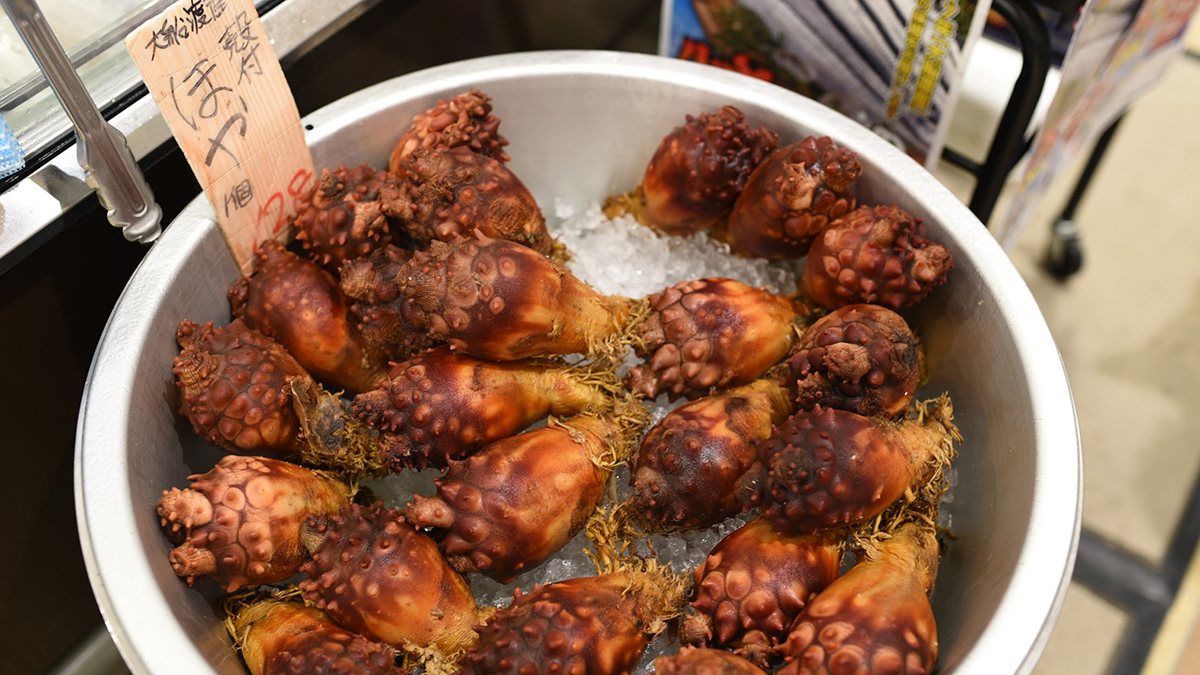 Like I never expected to like the taste of Hoya…
Like I never expected to like the taste of Hoya…ホヤが好きになる日がやってくるとは・・・
As much as I enjoyed full package of lectures on social and local design, meeting up with local businesses was something that completed the whole experience. I was assigned to Sanriku Toritate Ichiba, who is just laughing new frozen fish products. Though we only had a short time and there was lots to digest (both information and nice frozen fish), the company owner, Mr. Yagi had clear on what he wanted. He specifically asked the designers that he needed a design that can bridge the gap between the pre-conception that frozen fishes are not fresh and taste no better than fish that looks alive. I say ‘fish that looks alive’ as Mr.Yagi changes my perception of freshness with his products. He explained the technology that enabled the magic but by tasting his products was enough to convince me. To convert a strong belief, eye-witnessing is the most effective tool than thousand words.
ソーシャルデザインやローカルデザインに関するレクチャーはとても勉強になったのですが、地元の事業者と交流できたことこそが今回のプログラムの醍醐味だったと思います。私は『三陸とれたて市場』という、「冷凍海鮮食品」を扱う事業者を担当しました。短い時間の中で大量の情報とたくさんの魚を消化しなければならなかったのですが、社長の八木さんは自分の方向性に関してとても明確な目標を持っていました。「冷凍の海鮮食品は新鮮ではなく、生の魚ほど美味しくない」という固定概念を覆すようなデザインをしてほしいと依頼されました。八木さんの会社の商品は、私の「冷凍食品」や「生の魚」などのイメージを完全に変えてくれました。八木さんの会社が使っている瞬間冷凍技術(CAS)を説明してくれたのですが、CAS食品の試食ほど説得力のある説明はありませんでした。謂わば、百聞は一見に如かず。自分の目で見て、自分の口で試してもらうことが一番説得力があると思いました。
 Like who’d thought this was 2 years frozen Oyster?
Like who’d thought this was 2 years frozen Oyster?これが2年前に冷凍された牡蠣だなんて、誰も信じてくれないでしょう。
Reflecting on my experience, my design solution included some brand marketing strategies too. I suggested that the company should find opportunities to seek out to the customer in person, for example, it could be a pop-up restaurant or cooking studio. To expand this brand strategy, the product may better be found on local organic shops first rather than large chain supermarket. In this way, the product will position itself as ‘organic’ and ‘fresh’ first. Once the opportunity or the contact is made, this is where my role as a designer comes in. The brand image should manage the whole experience and atmosphere. I suggested that the brand should play with the idea that blends tradition with cutting-edge technology – like the ‘time capsule’. The visuals should look old, traditional yet elegant and sophisticated. Key visual symbol here was the rope; a traditional tool for fishing that has been used for thousands of years till today, and also a tool that holds things together, which works nicely as a symbol to hold a rather polarizing idea of ‘traditional’ and ‘cutting-edge technology’. Alongside, I presented few visual ideas such as a pop-up restaurant and cooking studio that looks like tradition fish house ‘ Banya’, packaging design that reflects traditional Japanese packaging, a leaflet that shows whole story of fish and people who are involved in the process of the product preparation, website where people can learn more or ask questions that they might have and more. I hope my suggestions sparked new possibilities like the experience in Door to Asia did to me. Best wishes for the new product launch, I pray to God for Mr.Yagi’s success so that it makes its way to South Korea so I can taste the delicious fish again!
私はデザイン制作とブランドマーケティング戦略を提案しました。例えば、三陸とれたて市場は、ポップアップレストランやクッキングスタジオなどを通して、お客様と直接接する機会を増やすべきだと提案しました。更に、大手チェーンのスーパーよりも、ローカルなオーガニック食品店に置くことによって、「オーガニック」や「新鮮」だというイメージが自然につくでしょう。こういうふうにお客様が直接繋がって初めて、私はデザイナーとして役立ちます。ブランドイメージは全体的な体験や雰囲気を決めるので、私は、先進技術と伝統を融合させた「タイムカプセル」というブランドイメージを提案しました。商品のビジュアルは少し古くて伝統的で、それと同時にエレガントで洗練された印象を与えなければなりません。キービジュアルのシンボルとして、”ロープ”を提案しました。ロープは、昔から現在に至るまで漁業で使われてきた伝統的な道具であり、そしてものを「結ぶ」道具でもあるので、「伝統」と「先進技術」というふたつの正反対の要素を結ぶシンボルにしました。更に、番屋という漁師の小屋をイメージしたポップアップレストランとクッキングスタジオのビジュアルをデザインしました。それから、日本の伝統的なパッケージデザインに、その商品の物語を伝えるべく、その商品が出来上がるまでの過程に関わっている人の紹介をするリーフレットを作り、最後にお問い合わせができるウェブサイトも提案しました。DOOR to ASIAが私の視野を広げてくれたように、私の提案も、三陸とれたて市場と八木さんにとって新たな可能性が広がるものであるといいなと思います。新しい商品開発、そして会社の益々の発展をお祈りします。私が韓国でも新鮮な魚が食べられるよう、いつかCAS商品を韓国まで展開してください。
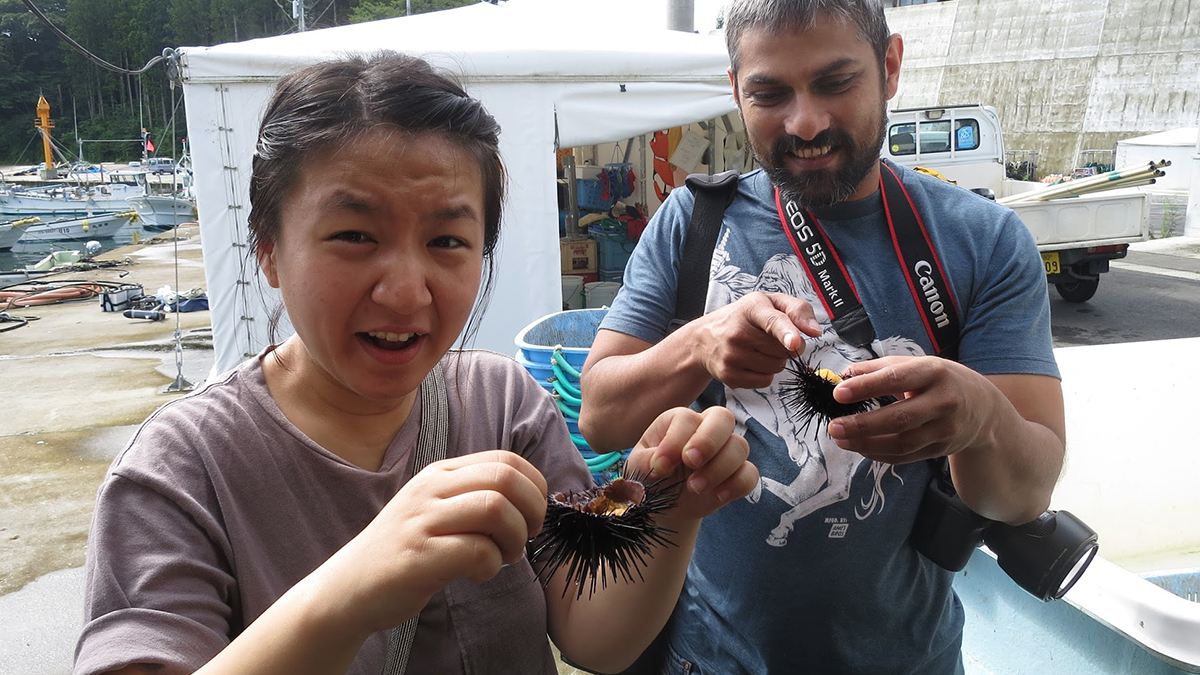 Like, again!
Like, again!ウニが動いている!!
I am grateful that I was part of Door to Asia program. Every moment I spent there remain as a good memory and sure it will remain so. (Except I gained 2 kilos and now enrolled to a gym to lose some fat!) I still brag about my experience – about the fish I ate, about the amazing people I met that I cannot possibly do so if I was only traveling, about the great program itself and about great ethics that everyone showed, which inspired me. This was only possible because of devoted staff members who were organizing and running the program. Besides, just meeting up with other designers from Asia has marked the significant change in me, so I am grateful that way too. This inspired me to organize a small exhibition in Seoul last November. I sincerely wish that this network continues on and wish to see everyone again someday. Please take care till we meet again. Thank you!
DOOR to ASIAに参加させていただくことができてとても感謝しています。そこで過ごした毎分毎秒は良い思い出になったし、これからも良い思い出になるでしょう。(しかし魚を食べ過ぎて2キロ太ったので、減量するためにジムに入会しました!)私が食べた新鮮な魚、そこで出会った素晴らしい人々、DOOR to ASIAという素晴らしいプログラムなどを、今でも周りの友達に話します。これは、プログラムを一生懸命、丁寧に運営してくれた皆さんのおかげです。アジアのほかのデザイナーに出会うことによって自分が変わったことも、とてもありがたかったです。彼らとのつながりで2017年11月にはソウルで小さな展示会を開いたのです。この友情と繋がりが永遠と続きますように。また会う日まで!
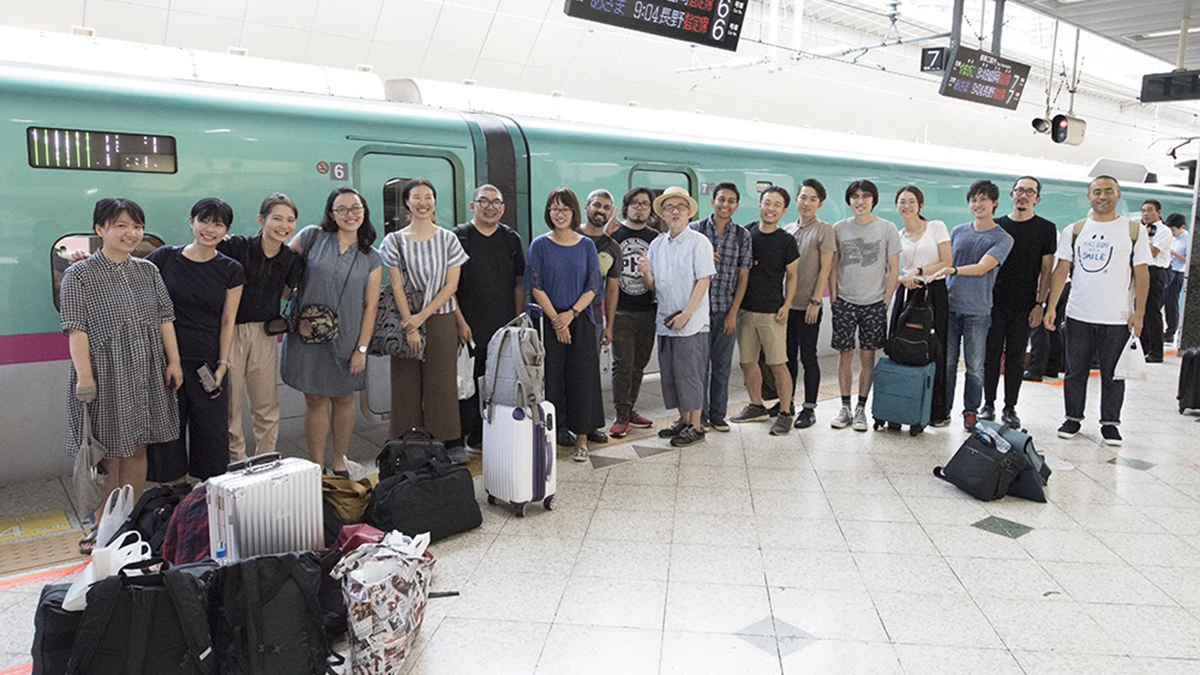 See you!
See you!さようなら!
In-ah
